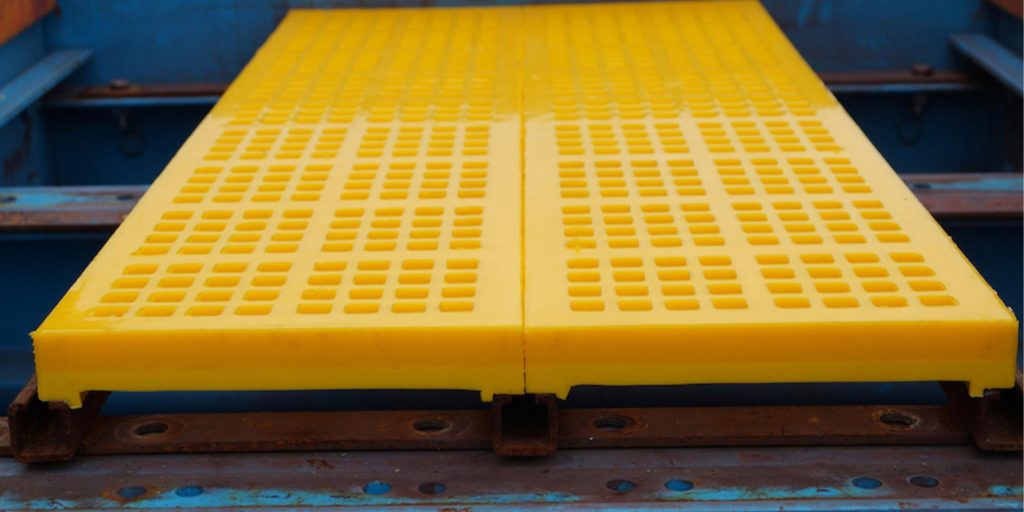Jun. 25, 2020
Wear liners play an important role in rock crushing – and despite their seeming simplicity, they’ve come a long way over the past decade.
To uncover the story behind modern wear liners, we spoke with Jimmy True, the product manager of wear liners at TEMA ISENMANN, and unpacked how wear liners work, how they provide value, and how they’ve improved over time.
If you’re evaluating wear liners for your rock crushing applications, here’s the information you should know.
1. What are wear liners and what do they do?
Let’s start with the basics.
Wear liners are casings designed to protect machine components from wearing down. In many cases, they function like a protective shell, shielding equipment components from material impacts. “With liners,” explains True, “the equipment is protected from everyday wear.”
Here’s how Metso describes the main function of wear liners:
“Many mining, aggregates, and industrial applications process rocks and other abrasive materials that wear out equipment and parts. The main function of wear linings is to protect the assets and to provide sufficient wear resistance to satisfy maintenance requirements.”
In rock crushing plants, wear liners are commonly used in applications like crushers, screens, feeders, and chutes. TEMA ISENMANN gets more specific, noting that they are useful as “frame protectors, tube covers, discharge and feed lips, and chute/pan liners.”
2. What are the benefits of wear liners?
The benefits of wear liners are straightforward. Wear liners protect crusher parts from accumulating wear and tear.
That leads to benefits like:
- Increased component lifespans. As components avoid wear accumulation, they last longer.
- Reduced maintenance time and costs. With less wear, less maintenance is required, saving time and money.
- Reduced downtime and increased productivity. As less maintenance time is required (and components are replaced less frequently), crushing plants can spend more time in action.
At a bottom-line level, wear liners save costs and increase profit from more efficient production. These benefits are maximized with high-quality liners like TEMA ISENMANN’s WS 2.10 Magnetic Wear Liners.
3. What makes WS 2.10 Magnetic Wear Liners different?
To this point, we’ve focused on general wear liners – but as True notes, TEMA ISENMANN’s WS 2.10 Magnetic Wear Liners offer some unique advantages that are worth highlighting.
Traditionally, liners have been made from abrasion-resistant (AR) steel, which required welding and cutting for proper installation. Unlike traditional liners, WS 2.10 Magnetic Wear Liners are made from polyurethane and are fastened in place magnetically. This makes installation safer and quicker to reduce downtime and they are easy to replace.
Setup is just the start; functionally, these liners are a notch above other products. They are highly versatile and can be custom-made for any application – and best of all, they are durable. “They tend to last three times as long as comparable AR steel liners,” says True.
4. How long do liners last?
One of the most common questions around liners is exactly how long they last for.
The answer is that a liner’s useful life varies; their lifespans are longer or shorter based on the applications they’re used for. For example, if a liner is in a high-impact area at a plant that’s running every day all year, it won’t last as long as it would in a lower-impact area at a plant that’s running on weekdays or on a seasonal basis.
With that said, True notes that he’s seen liners last a long time. “We have areas that were installed when we first started producing liners 10 years ago,” he says, “that are still running today.” Many of those liners replaced traditional AR steel liners, and True says that plant facilitators have appreciated the difference.
“Our customers that have used our wear liners understand the cost savings that they provide,” he explains. “Before using our wear liners, customers were replacing or repairing equipment more often, which increased their labor cost, equipment cost, and downtime.”
5. How should you select the right liner for your application?
With these factors considered, how should you select a wear liner for your rock crushing application?
It always helps to consult with an expert.
Don’t settle for a standard wear liner simply because it’s what’s been used before. Over the past decade, wear liner technology has improved, resulting in materials that are more durable, more flexible, and easier to install. Talking with engineers can result in a liner that’s custom-built for your application using cutting-edge technology. This gets the job done more effectively – and over the long-run is more cost-efficient.
Ready to get started with a wear liner suited to your rock crushing needs?
We hope this information has been helpful as you consider your wear liner needs and evaluate your options.
If you’d like more insight into wear liners for rock crushing, let’s talk. At Mellott, we have experience in providing and servicing a broad range of equipment needs, including wear liners.
We’re experts at navigating the different components of rock crusher part selection, setup, and maintenance. If you’re looking for guidance into keeping your rock crushing plant operating at maximum efficiency – or want help in selecting the best wear lining for your application – get in touch with us today online or at 855.554.1606.

